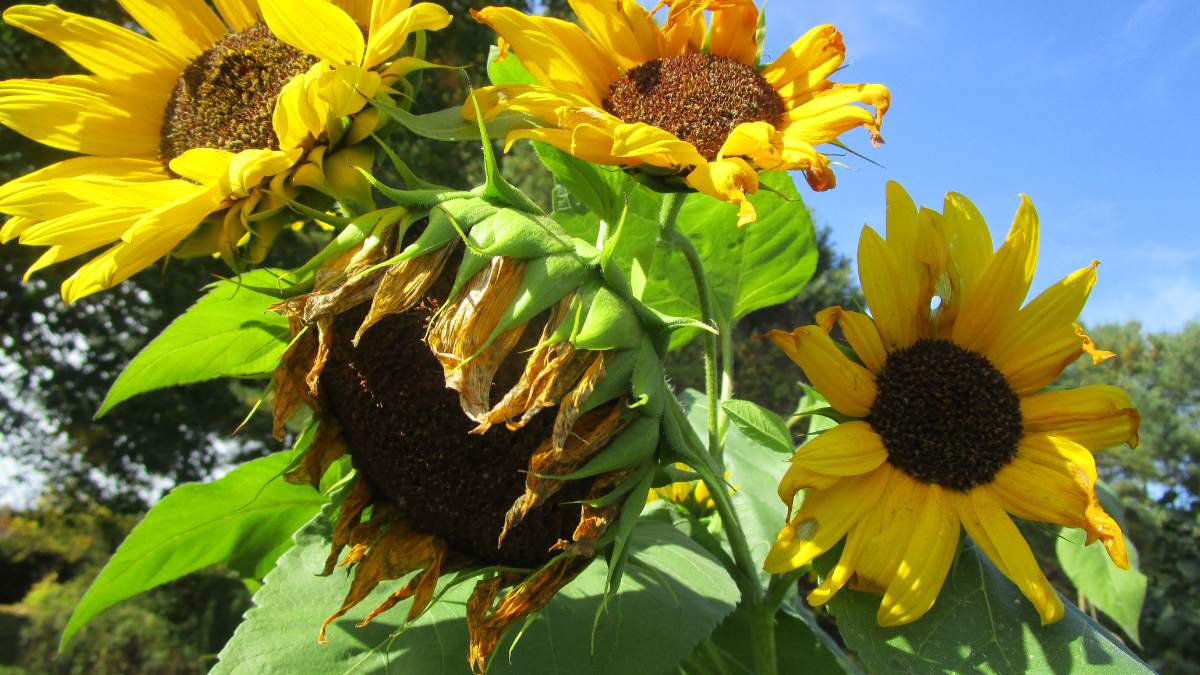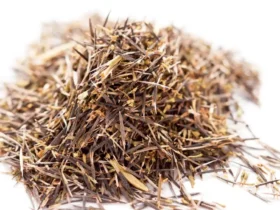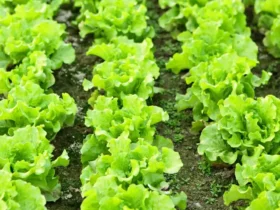Growing Stages of Sunflowers, including germination, seedling, vegetative, flowering, and seed development. During the germination stage, the seed absorbs water and sprouts.
As a seedling, the plant develops leaves and stems. In the vegetative stage, the plant grows taller and develops more leaves. The next stage is flowering, where the sunflower produces vibrant yellow flowers. Finally, during seed development, the flowers turn into seed heads that contain the sunflower seeds.
Seed Germination
Growing sunflowers is a delightful experience that can bring color and vibrancy to any garden. One of the first and most crucial stages of growing sunflowers is seed germination. This process involves awakening the sleeping seed and coaxing it to sprout into a beautiful and sturdy sunflower plant. In this article, we will explore the essential aspects of seed germination, including the preparation, planting conditions, and germination process.
Preparation
Before you embark on the journey of growing sunflowers, it is essential to properly prepare the seeds for germination. This preparation involves a few simple steps:
- Selecting the seeds: Choose healthy sunflower seeds that are plump and undamaged. Look for seeds with a firm, intact outer shell.
- Soaking the seeds: To improve the germination rate, you can soak the seeds in water overnight. This helps soften the seed coat, making it easier for the seed to sprout.
- Drying the seeds: After soaking, carefully pat dry the seeds using a paper towel. Avoid rubbing or damaging the seeds during the drying process.
Planting Conditions
The planting conditions play a vital role in the successful germination of sunflower seeds. Here are some factors to consider:
- Soil quality: Sunflowers thrive in well-drained soil that is rich in nutrients. Ensure the soil is loose and not compacted, as this allows the roots to spread easily.
- Sunlight: Sunflowers are sun-loving plants and require at least 6-8 hours of direct sunlight per day.
- Temperature: The ideal temperature range for sunflower seed germination is between 70-85°F (21-29°C). Avoid planting the seeds when the soil is too cold, as it can hinder germination.
- Spacing: Leave adequate space between each seed while planting. Sunflowers require ample room to grow and spread their large leaves.
Germination Process
The germination process of sunflower seeds involves several key stages:
- Seeding the soil: Dig small holes in the prepared soil and place a seed in each hole. Cover the seeds with a thin layer of soil and gently pat it down.
- Watering: Keep the soil consistently moist during the germination process. Avoid overwatering, as it can lead to rotting of the seeds.
- Seedling emergence: Within 7-10 days, the sunflower seedlings will start to emerge from the soil. As they grow, thin out the weaker seedlings to give the remaining ones more space and resources.
- Continued care: Provide the germinating sunflowers with regular water, sunlight, and protection from pests. As they grow, provide support to the growing stems using stakes or trellises.
By following these steps and providing the optimal conditions, you can ensure a successful germination process for your sunflower seeds. Soon enough, you will witness the joyous sight of vibrant sunflowers adorning your garden.

Seedling Stage
Welcome to the exciting world of sunflowers! In this blog post, we will explore the different growing stages of sunflowers, starting with the seedling stage. This is the beginning of the sunflower’s journey, where the tiny seed transforms into a young plant with remarkable potential.
Appearance And Growth
During the seedling stage, a sunflower seed sprouts and develops its first set of leaves, known as cotyledons. These cotyledons are often heart-shaped and serve as an energy source for the young plant as it emerges from the soil. With time, the true leaves start to appear, providing the sunflower with the ability to photosynthesize and further support its growth.
In terms of size, sunflower seedlings typically reach a height of 3 to 4 inches during this stage. The stem is delicate and pale green, gradually strengthening to support the eventual height and weight of the mature sunflower.
Watering And Nutrient Needs
As a caring gardener, it is crucial to provide your sunflower seedlings with adequate water and nutrients during their early stages of life. Watering should be done gently and regularly, ensuring the soil remains moist but not waterlogged. The delicate roots of the seedling require proper hydration for optimal growth.
In terms of nutrients, sunflower seedlings can benefit from a balanced fertilizer or compost to promote healthy root development and overall growth. Applying a diluted solution with NPK (Nitrogen, Phosphorus, and Potassium) can provide the necessary minerals for robust seedling growth.
Protection
Protecting your sunflower seedlings from environmental factors is crucial for their survival and successful progression to the next stage. Small seedlings are vulnerable to harsh sunlight, strong winds, and pests, so it’s essential to shield them accordingly.
One effective method for protection is using a shade cloth or adjusting the position of the young plants to provide partial shade during the hottest hours of the day. Keeping an eye on the weather forecast and taking necessary precautions can prevent damage caused by strong winds or heavy rain showers.
Additionally, it’s important to stay vigilant against pests that may pose a threat to your sunflower seedlings. Regularly inspecting the plants for signs of infestation and taking appropriate measures, such as using organic pest control methods, can help keep the seedlings healthy and thriving.
By paying attention to the appearance, growth, watering and nutrient needs, as well as protection of your sunflower seedlings, you are setting the stage for a successful and rewarding gardening experience

Vegetative Stage
During the vegetative stage of sunflower growth, the plant focuses its energy on developing its leaves and branches. This stage is crucial in establishing a strong foundation for the sunflower to flourish later on. Leaf development, branching, and continued care are key aspects of the vegetative stage that require attention to ensure healthy growth.
Leaf Development
Sunflowers begin their vegetative stage by producing large, broad leaves that enable the plant to capture as much sunlight as possible. These leaves act as solar panels, converting sunlight into energy through the process of photosynthesis. The leaves are typically green in color, indicative of their ability to produce chlorophyll, the pigment responsible for the plant’s food production. As the sunflower continues to grow, more leaves appear in an alternating pattern along the stem, maximizing their exposure to sunlight.
Branching
As the sunflower matures during the vegetative stage, it starts to develop branches. These branches emerge from the leaf axils, which are the areas where the leaves attach to the stem. Branching is an essential process because it allows the sunflower to form multiple heads, resulting in more flowers. Each branch has the potential to produce its own vibrant sunflower head, adding beauty and diversity to the plant. Adequate spacing between branches is crucial to prevent overcrowding, ensuring that each one has enough access to light and nutrients.
Continued Care
Throughout the vegetative stage, sunflowers require proper care to support their growth and development. This includes providing sufficient water, sunlight, and nutrients. Watering should be frequent but not excessive, allowing the soil to dry slightly between waterings. Sunflowers thrive in full sun, so placing them in a location that receives at least 6 hours of direct sunlight is crucial. Additionally, fertilizing the soil with a balanced fertilizer promotes healthy leaf and branch growth.
To ensure proper root development, it is important to keep weeds and competing plants at bay. Weeds can deprive sunflowers of essential nutrients and water, impeding their growth. Regular weeding around the base of the sunflower plants helps maintain a healthy and robust vegetative stage.
In conclusion, the vegetative stage of sunflower growth is focused on leaf development, branching, and continued care. Proper attention to these aspects ensures that sunflowers establish a strong foundation for future growth and vibrant blooms. By providing the necessary conditions and care, gardeners can nurture sunflowers through this critical stage, setting the stage for a successful growth journey.

Bud Formation
Introduction:
One of the most fascinating stages in the growth of sunflowers is bud formation. This is the period when the plant transitions from the vegetative stage to the reproductive stage. Understanding the signs of bud formation and optimizing bud growth is crucial for ensuring a beautiful display of sunflowers in your garden.
During the bud formation stage, several noticeable signs indicate that your sunflower plant is preparing to bloom. These signs include:
- Budding: The emergence of small buds at the center of the leafy growth indicates the beginning of the bud formation stage.
- Tightening: As the buds progress, they start to tighten and become more compact.
- Color change: The buds change from green to a slightly darker shade, indicating their maturation.
- Bract development: The bracts, which are leaf-like structures surrounding the actual flower head, begin to grow and cover the developing buds.
Optimizing bud growth during this stage is essential to ensure healthy and vibrant sunflowers. Here are a few tips to help you optimize the growth of your sunflower buds:
- Provide adequate nutrients: Sunflower plants require a balanced fertilizer rich in phosphorus, potassium, and nitrogen to promote bud development. Apply a slow-release fertilizer according to the manufacturer’s instructions.
- Proper watering: Keep the soil evenly moist but avoid waterlogging, as excessive moisture can lead to bud rot. Water the plant deeply and allow the top inch of soil to dry out before watering again.
- Ensure sufficient sunlight: Sunflowers thrive in full sun, so make sure your plants receive a minimum of 6-8 hours of direct sunlight each day. Insufficient light can inhibit optimal bud growth.
- Protect from pests: Monitor your plants regularly for any signs of pest infestation, as these can damage bud development. Use organic insecticides or take preventive measures to keep pests at bay.
- Support the stems: As the buds grow larger and heavier, the stems may require additional support to prevent bending or snapping. Install stakes or use a trellis system to support the stems and keep the buds upright.
By following these tips, you can help your sunflower buds reach their full potential and ensure a stunning floral display when they finally bloom. Understanding the signs of bud formation and providing the right conditions will lead to healthy, strong, and vibrant flowers, enhancing the beauty of your garden.

Blooming Stage
The blooming stage is the most beautiful and eagerly anticipated phase in the growth cycle of sunflowers. It is during this stage that the sunflower truly comes to life, displaying its vibrant colors and captivating presence. The blooming stage of a sunflower represents the culmination of weeks of careful nurturing and patience. In this section, we will explore the various aspects of the blooming stage, starting with the first blooms and progressing to full blooms, while also discussing how to maintain the blooms for maximum beauty and longevity.
First Blooms
When sunflowers first begin to bloom, it is an enchanting experience that fills the garden with a sense of joy and vibrancy. The first blooms usually appear around 50 to 75 days after planting, although this can vary depending on the sunflower variety and growing conditions. These early blooms serve as a promising sign of what is to come, as the sunflower’s iconic petals begin to unfurl and reveal their captivating hues.
To ensure a successful first bloom, it is important to provide the sunflower with the right conditions. Sunflowers thrive in well-draining soil and require at least six to eight hours of direct sunlight each day. Adequate watering is crucial during this stage, as the sunflower’s roots need to establish a strong foundation. Remember to provide sufficient water, keeping in mind that overwatering can be detrimental.
Full Blooms
As the sunflower matures, it enters the full bloom stage, which is truly a sight to behold. During this time, the sunflower’s massive, golden-yellow flower head reaches its maximum size and radiates with a remarkable intensity. The petals are fully extended, creating a stunning display that brightens up any garden or landscape.
To promote full blooms, it is essential to provide the sunflower with proper care and maintenance. Regular watering is crucial to keep the plant hydrated, especially during hot summer months. Adding a layer of mulch around the base of the sunflower can help retain moisture and suppress weeds. Additionally, providing support, such as using stakes or trellises, can prevent the heavy flower heads from drooping or breaking.
Maintaining Blooms
Ensuring that sunflowers maintain their blooms requires consistent attention and care. Deadheading, the removal of spent blooms, is crucial in promoting continued blooming. By removing these fading flowers, the sunflower plant can redirect its energy towards producing new blooms, prolonging the overall blooming period.
Regular fertilization can also play a vital role in maintaining blooms. Using a balanced, slow-release fertilizer can provide the necessary nutrients for healthy growth and abundant blooms. It is important to follow the recommended dosage and avoid overfertilizing, as this can lead to excessive foliage growth at the expense of blooms.
By paying close attention to the needs of your sunflowers during the blooming stage, you can ensure a vibrant and long-lasting display of beauty in your garden. From the first delicate blooms to the full, radiant flowers, your sunflowers will amaze and delight all who behold them.

Seed Production
Sunflowers go through various growing stages before reaching their seed production phase. From germination to flower development, each stage requires proper care and attention to ensure a successful harvest of sunflower seeds.
One of the most fascinating aspects of growing sunflowers is the process of seed production. Seeds are not only vital for the next generation of sunflowers but they can also be saved for future planting or even used in various culinary creations. From seed formation to harvesting, let’s uncover the stages involved in sunflower seed production.
Seed Formation
Seed formation is a crucial stage in the life cycle of a sunflower. It begins with pollination, as bees and other pollinators transfer pollen from the male flower parts (anthers) to the female flower parts (stigma). Once the pollen reaches the stigma, it travels down the style into the ovary, where fertilization occurs. The fertilized ovule then develops into a seed. This process usually takes around 60 to 90 days, depending on the sunflower variety and growing conditions.
Harvesting Seeds
When it comes to harvesting sunflower seeds, timing is key. To determine if the seeds are ready for harvest, examine the back of the sunflower head. The petals should be dry and falling off, and the seed head should be turning brown. Additionally, the seeds should feel firm and have a black and white striped pattern. If the seeds are still green or soft, they are not yet mature and should be left on the plant to ripen further.
- Harvesting the seeds can be done by carefully cutting or snapping the seed head off the stem.
- Place the seed head in a paper bag or bucket to collect any loose seeds that may fall during the process.
Once the seed heads are harvested, it’s time to separate the seeds from the rest of the flower. This can be done by rubbing the head gently to loosen the seeds or by using a clean, dry cloth to strip the seeds off the head. It’s important to ensure that the seeds are completely dry before storage to prevent mold or mildew. Spread them out in a single layer on a clean, dry surface in a well-ventilated area. If the weather is damp or humid, you can also use a food dehydrator to speed up the drying process.
| Helpful Tips | Storage Options |
| Label your seed harvest with the sunflower variety and date of harvest for future reference.Store the seeds in an airtight container to keep them fresh and protect them from pests.Keep the container in a cool, dark place like a pantry or a refrigerator. | EnvelopesMason jarsZiplock bags |
By following these steps, you can successfully produce and harvest seeds from your sunflowers. Not only will you have a bountiful supply of seeds for future planting, but you’ll also gain a deep appreciation for the intricate and rewarding process of seed production.
Frequently Asked Questions For Growing Stages Of Sunflowers
How Long Does It Take For A Sunflower To Grow?
Sunflowers typically take around 70 to 100 days from seed planting to full maturity.
What Are The Different Stages Of Sunflower Growth?
Sunflowers go through four main stages: germination, seedling growth, vegetative growth, and flowering.
What Factors Affect The Growth Of Sunflowers?
Sunlight, temperature, soil conditions, watering, and proper nutrition significantly impact the growth of sunflowers.
Conclusion
Understanding the growing stages of sunflowers is vital for successful cultivation. By knowing the different phases, from seed germination to flowering, gardeners can provide the necessary care and support throughout each stage. From proper watering and fertilizing to protecting against pests, a well-informed approach will yield beautiful, healthy sunflowers.
So, have patience and embrace the journey of watching these majestic plants grow and bloom. Happy gardening!




